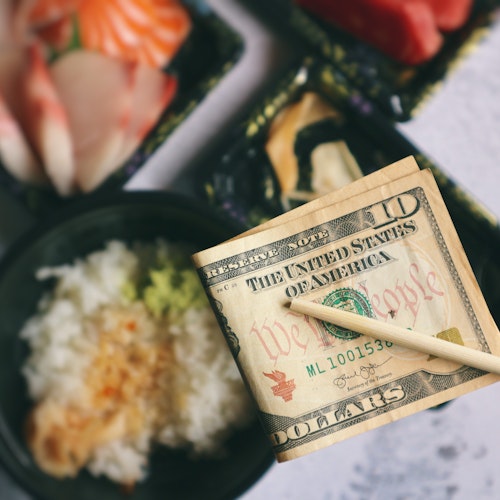A Guide to Higashiyama: The Old Town Kyoto

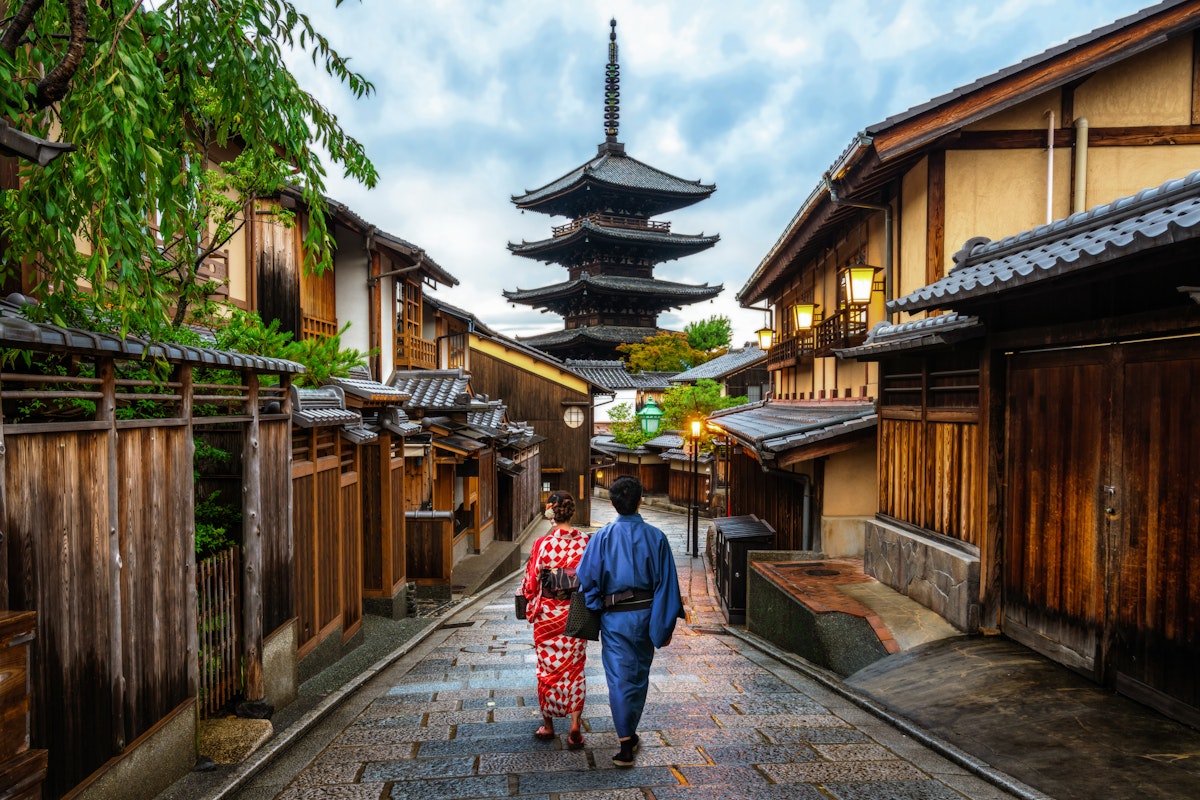
Welcome to the historic heart of Kyoto, the Higashiyama District, where Japan's rich history resonates in every corner. This guide invites you on a journey through Higashiyama, the embodiment of Kyoto's old-town charm.
Here, ancient traditions are etched into the cobblestone streets and the walls of time-honored buildings. As you wander through Higashiyama, you'll find yourself stepping back amidst scenes that capture the essence of classical Japan.
Each lane and structure in this district narrates its story, offering a tangible connection to Kyoto's illustrious past. Join us as we explore the timeless beauty, famous landmarks, and historical significance of Higashiyama, a true gem in Kyoto's cultural crown.
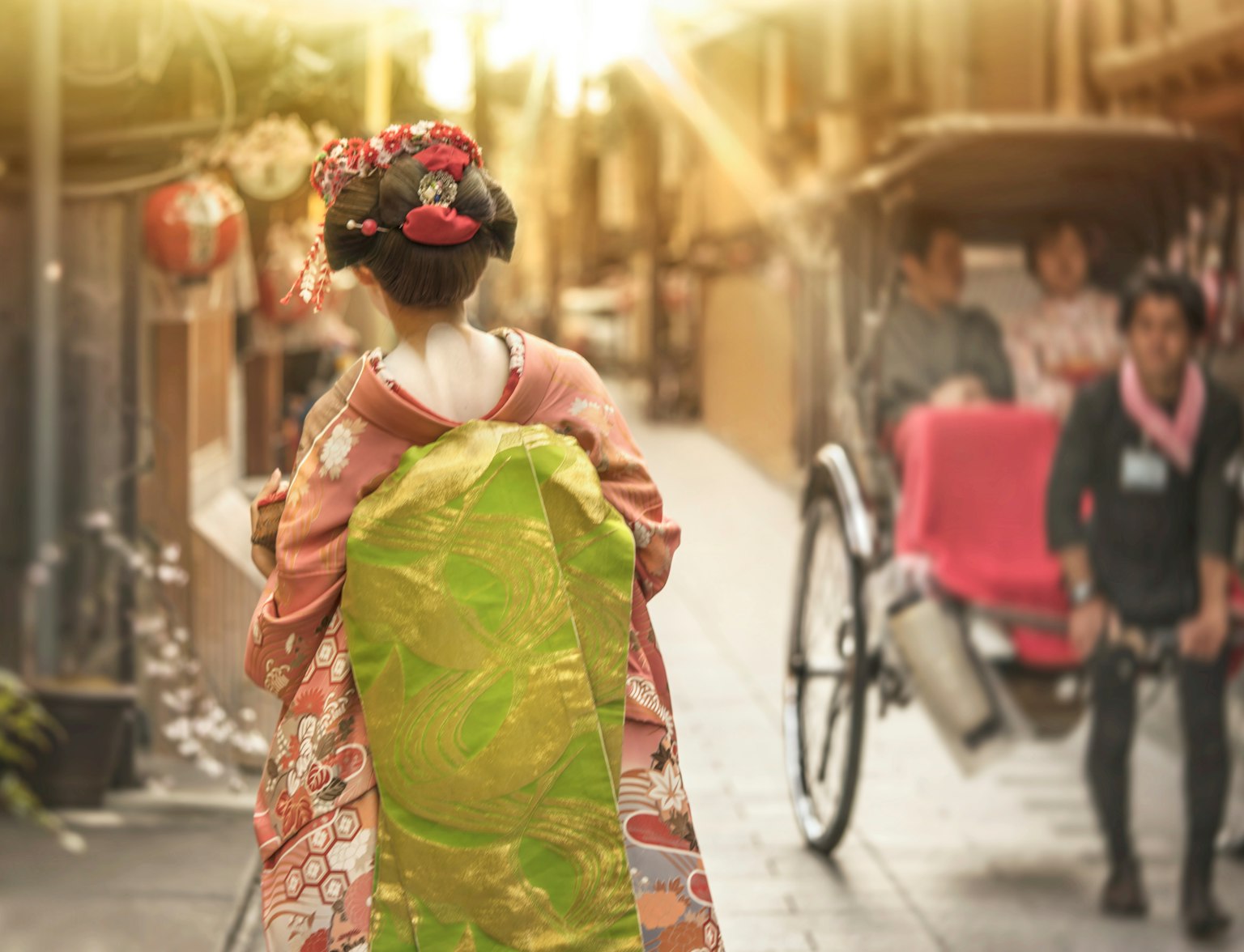
Embark on a captivating Higashiyama rickshaw tour and discover the timeless beauty of old Kyoto.
History of Higashiyama District
Created in 1929, the Higashiyama District in Kyoto, Japan, is known as a center of traditional culture and history. The name Higashiyama actually means 'Eastern Mountain District' and directly refers to the lower slopes of Kyoto's eastern mountains.
Famous for its old-world charm, the area is protected by strict rules that stop modern buildings, keeping its historical character safe. Higashiyama is recognized as one of Japan's best-preserved historical regions, sharing this distinction with Gion, Kyoto's famous geisha district.
This area is home to multiple geisha communities, referred to as kagai, and is sprinkled with a variety of UNESCO World Heritage temples.
Must-Visit Spots in Higashiyama
Kiyomizudera Temple
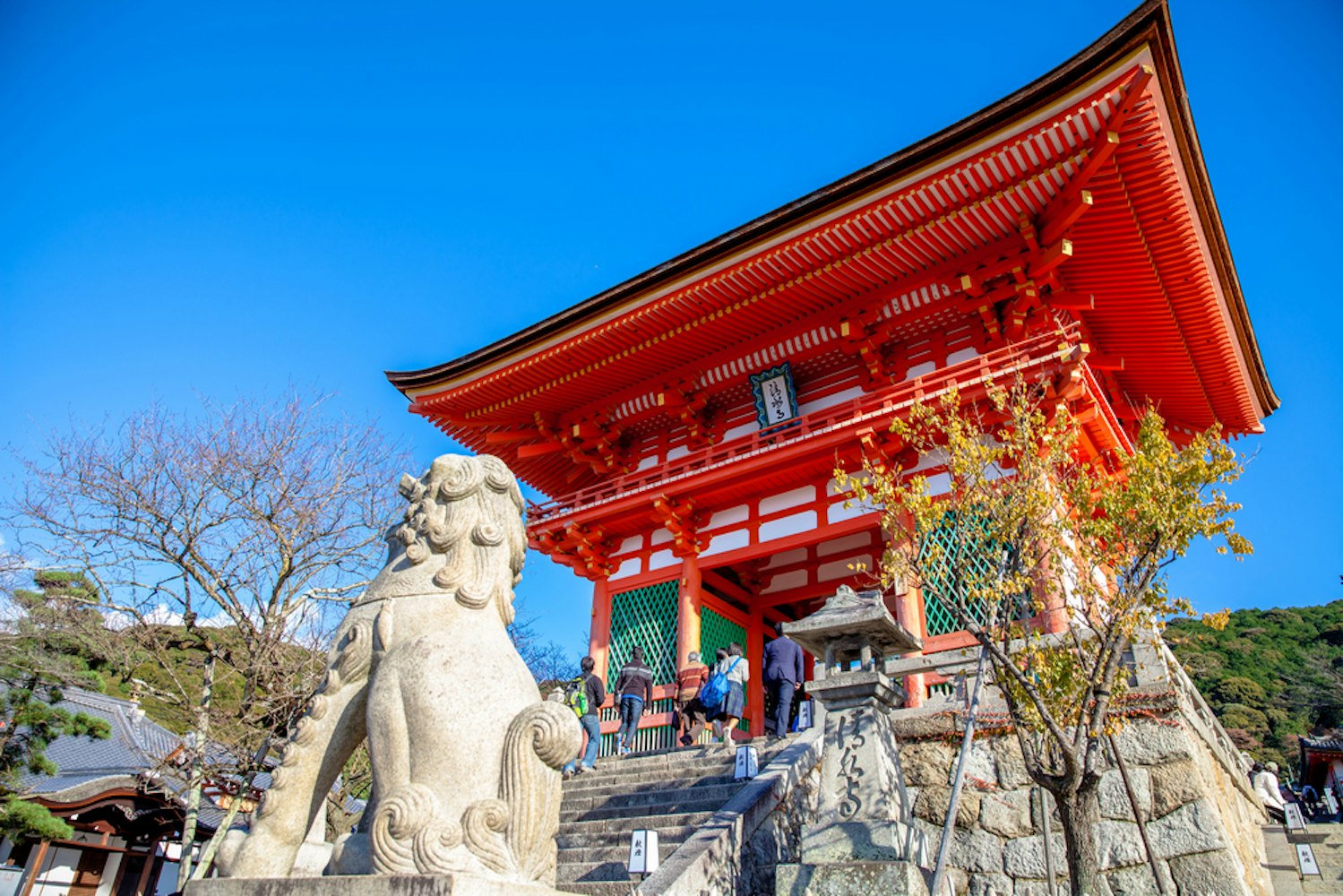
Kiyomizudera Temple, also known as the "Pure Water Temple," is an iconic symbol of Kyoto. It is famous for its wooden stage that offers breathtaking panoramic views of the city and the cherry blossoms during spring.
The temple's main hall, built without nails, is a testament to ancient Japanese craftsmanship. Explore the temple's various halls and pagodas, and don't miss the Otawa Waterfall, where visitors can drink from three different streams believed to bring health, longevity, and success.
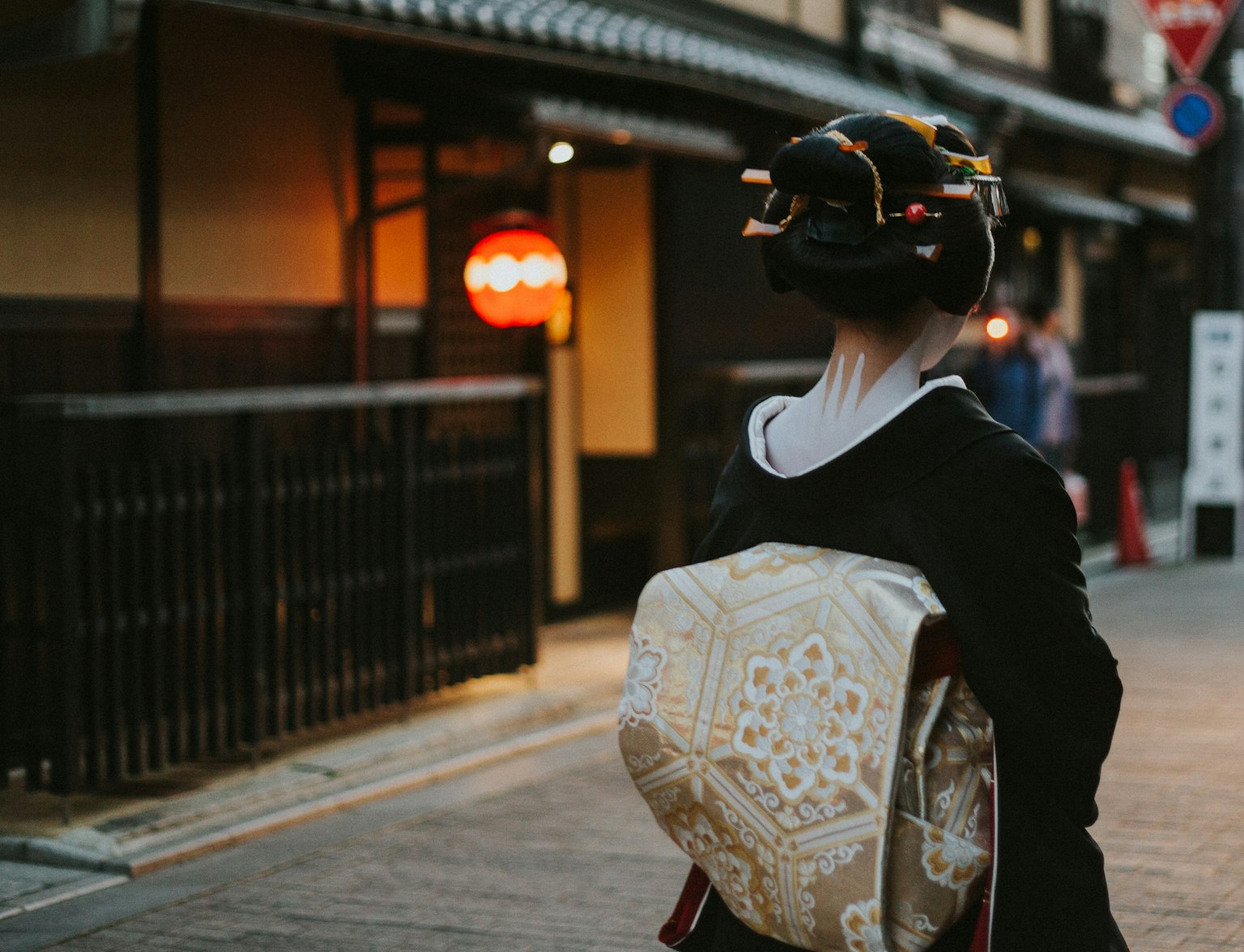
Take in the breathtaking view of Kyoto from Kiyomizu-dera temple's terrace.
Heian Shrine

Heian Shrine, also known as Heian Jingu, is a revered Shinto shrine in Kyoto, Japan, celebrated for its historical and cultural significance. The shrine's striking features include its iconic large red torii gates, expansive gardens offering peaceful walks and housing a replica of the Chodo-in, ornate and vibrant architecture, and a seemingly floating bridge.
Notably, Heian Shrine is a meticulously crafted 5:8 scale replica of a key part of Heiankyo, the ancient imperial capital of Japan, including elements reminiscent of the imperial palace. It was constructed to commemorate Kyoto's 1,100th anniversary as the nation's capital. This shrine is a harmonious blend of spirituality, historical tribute, and architectural splendor, making it a must-visit tourist destination and a cherished site for locals in Kyoto.
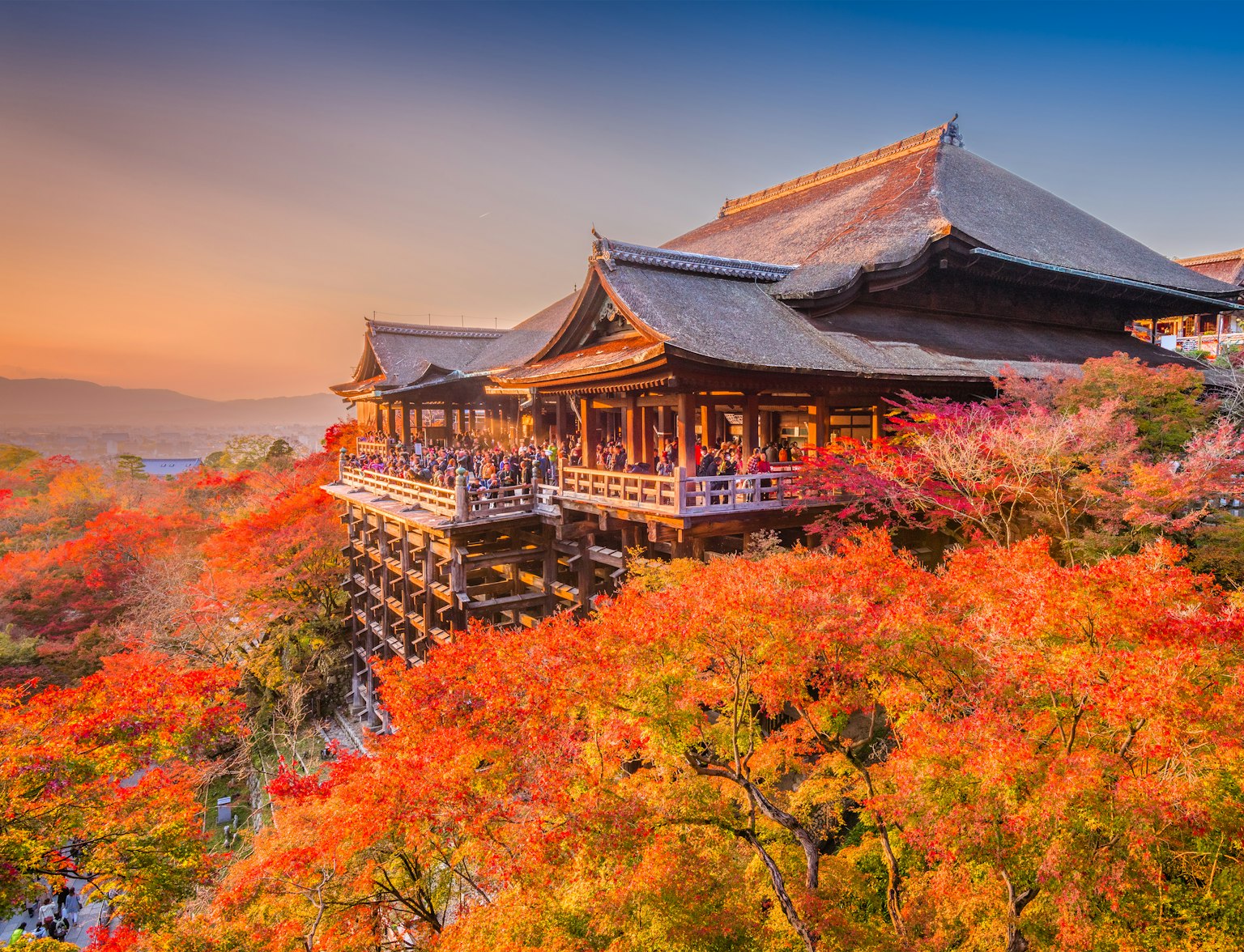
Explore the sacred grounds of Heian-jingu Shrine.
Yasaka Pagoda
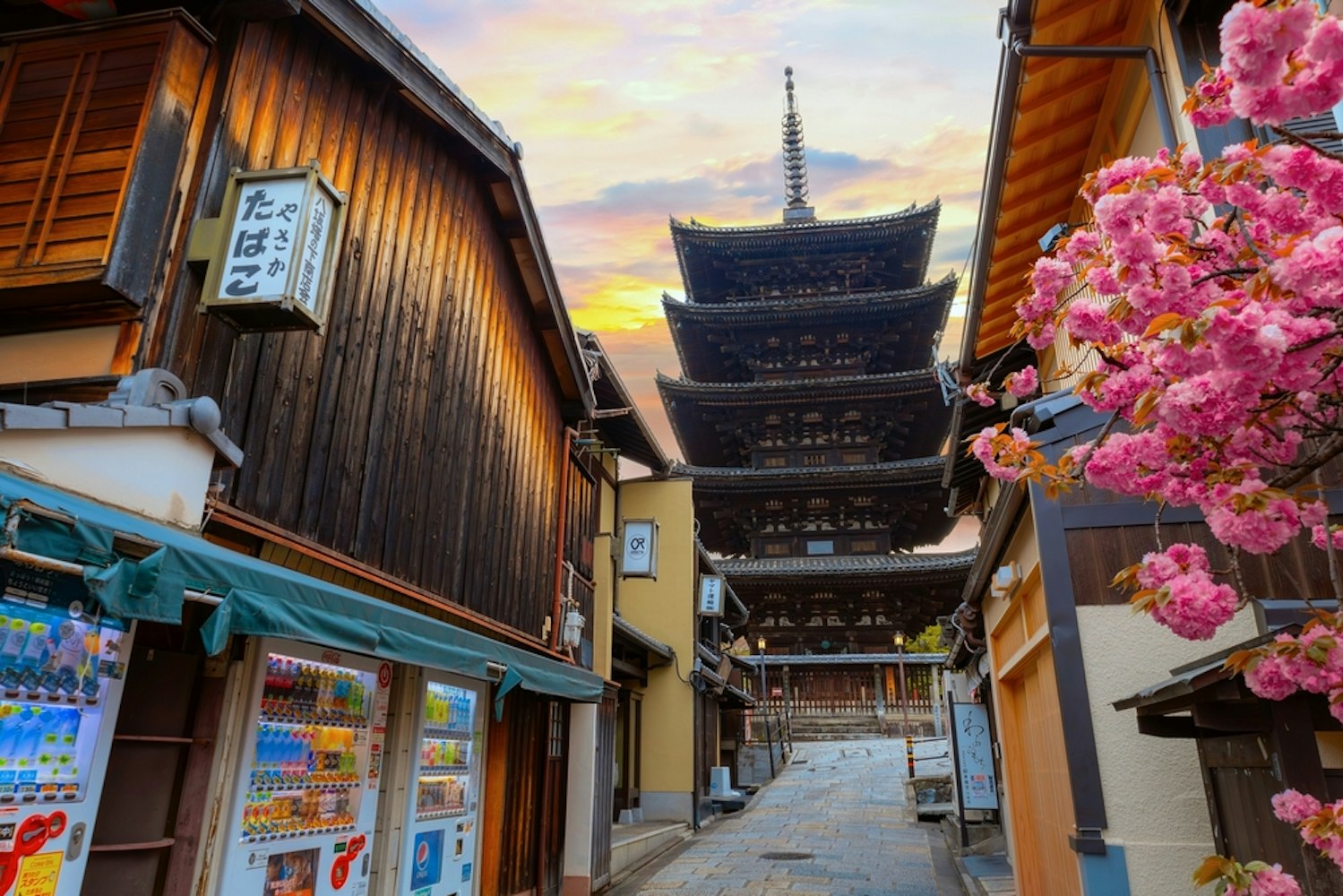
The Yasaka Pagoda, also known as the Tower of Yasaka, is a five-story Buddhist pagoda located in Higashiyama-ku, Kyoto, Japan. It is the sole remaining structure of the 6th-century Hōkan Temple complex.
Its precise establishment date, dating back to the 7th century, remains a topic of debate but is generally believed to have occurred during the reign of Prince Shotoku or in the sixth year of the Tenmu period (678 CE).
Over the centuries, it has been destroyed and rebuilt multiple times, with the current pagoda dating to 1408.
Historically, control of the pagoda was disputed between the nearby Shinto Gion Shrine and the Buddhist temple of Kiyomizu-dera. It was reconstructed in 1191 with the support of Minamoto no Yoritomo and affiliated with Zen Buddhism in 1240 by the head priest of Kennin-ji temple.
Today, the Yasaka Pagoda is a cherished historical and cultural landmark in Kyoto.
Maruyama Park
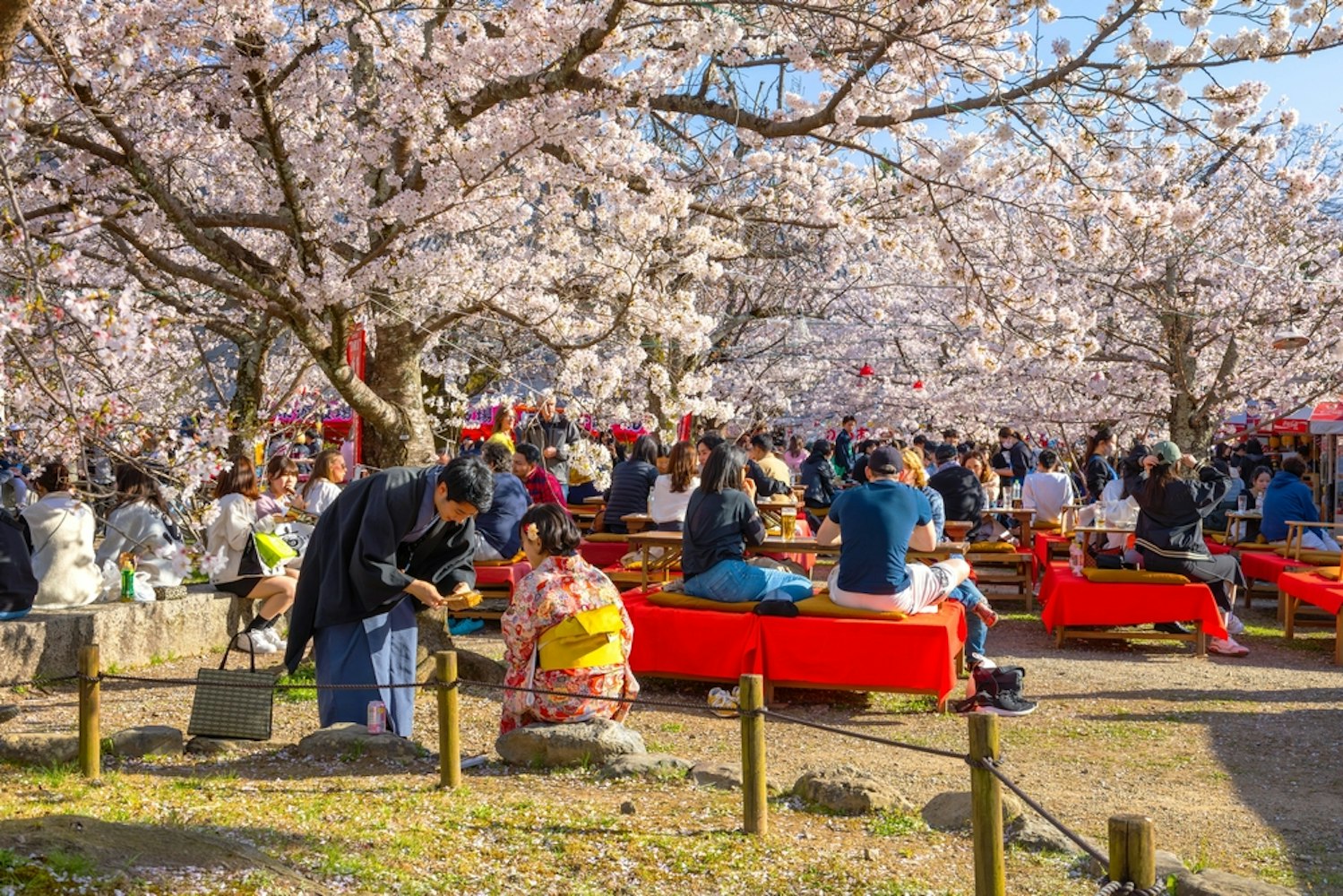
Maruyama Park, Kyoto's oldest public park, is adjacent to Yasaka Shrine. It's a cherished spot for visitors, especially during the first half of April when the cherry blossoms are in full bloom.
During this time, Maruyama Park transforms into Kyoto's most popular and bustling cherry blossom viewing destination. Known for its magnificent weeping cherry blossom tree, which is beautifully illuminated at night, the park is a prime location for witnessing the enchanting cherry blossoms.
Visiting during the cherry blossom season or New Year's Eve celebrations can be quite crowded, but the experience is well worth it if you're in the area. Beyond cherry blossoms, the park offers a serene escape with gardens, orchards, small rest houses, and even restaurants.
It's an ideal place to relax, reflect, or spend a few hours during the day. Plus, being adjacent to Yasaka Shrine, a stunning Shinto shrine, adds to the cultural and historical richness of the surroundings. Maruyama Park is undoubtedly a must-visit destination in Kyoto.
Yasaka Shrine
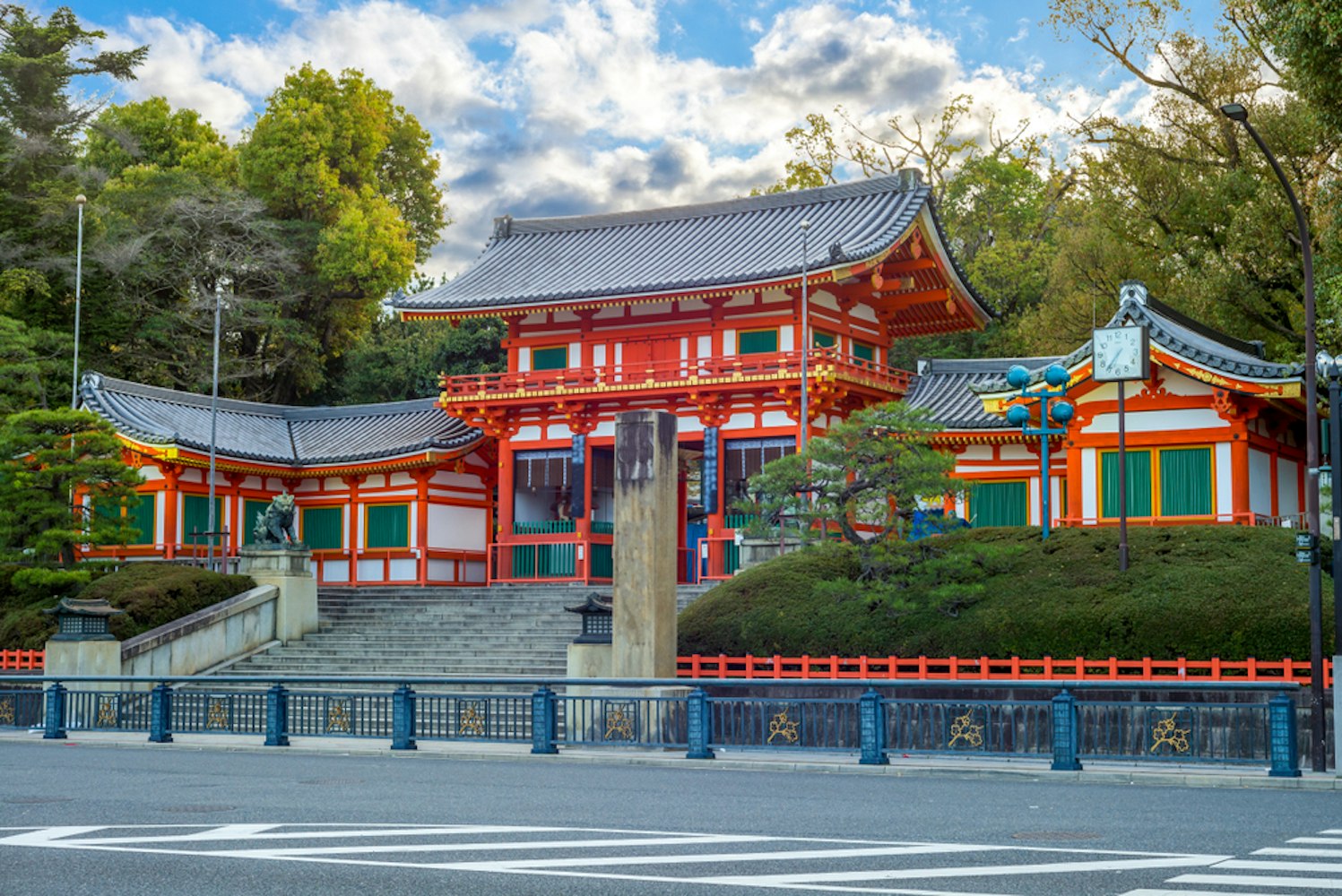
Located in the Gion district near the historic Higashiyama area, Yasaka Shrine is one of Kyoto's most popular shrines at the eastern end of Shijo-dori, adjacent to Maruyama Park. Founded in 656, this shrine, also known as Yasaka-Jinja, is famous for hosting the annual Gion festival, which begins on July 17 and extends for a full week.
The festival features numerous ceremonies, with the highlight being a grand parade that you can learn more about in our guide to Experiencing the Gion Matsuri Festival in Kyoto. As part of your visit, don't miss the opportunity to witness the iconic five-story Yasaka Pagoda, reconstructed in 1440 and open to visitors.
Additionally, you can experience the enchanting ambiance of the shrine by admiring the hanging lanterns, which are illuminated every evening. Yasaka Shrine is a must-visit destination when exploring the eastern side of Kyoto.

See Yasaka Shrine along the way.
Kodaiji Temple
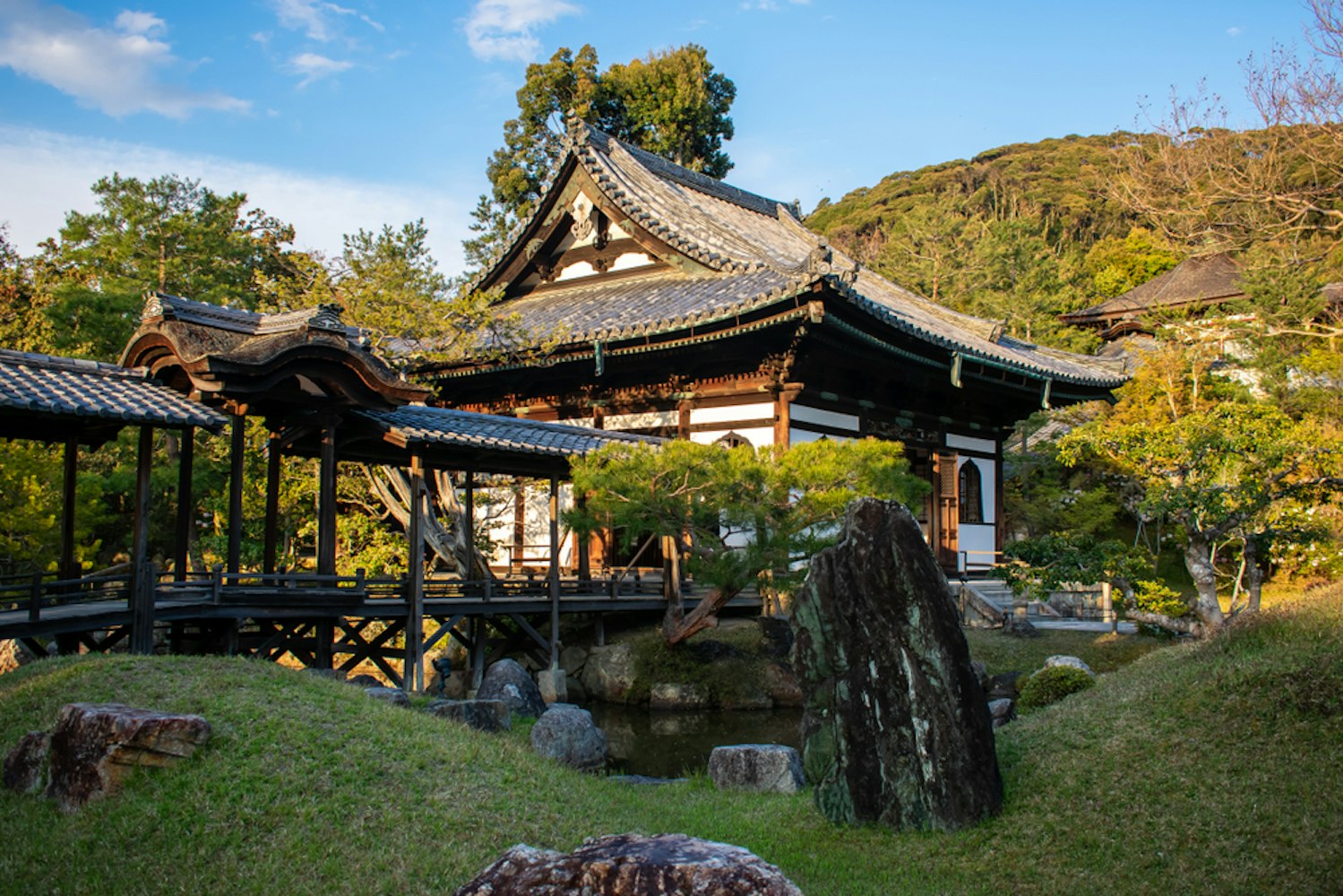
Constructed in 1605 in memory of Toyotomi Hideyoshi by the great political leader's wife, the Kodaiji Temple stands as a picturesque testament to their legacy. This serene temple boasts various features, including temple halls, beautifully landscaped gardens, a tranquil bamboo grove, and charming teahouses.
It's a place where history, natural beauty, and tranquility combine to create a truly enchanting experience.
Shogunzuka Mound
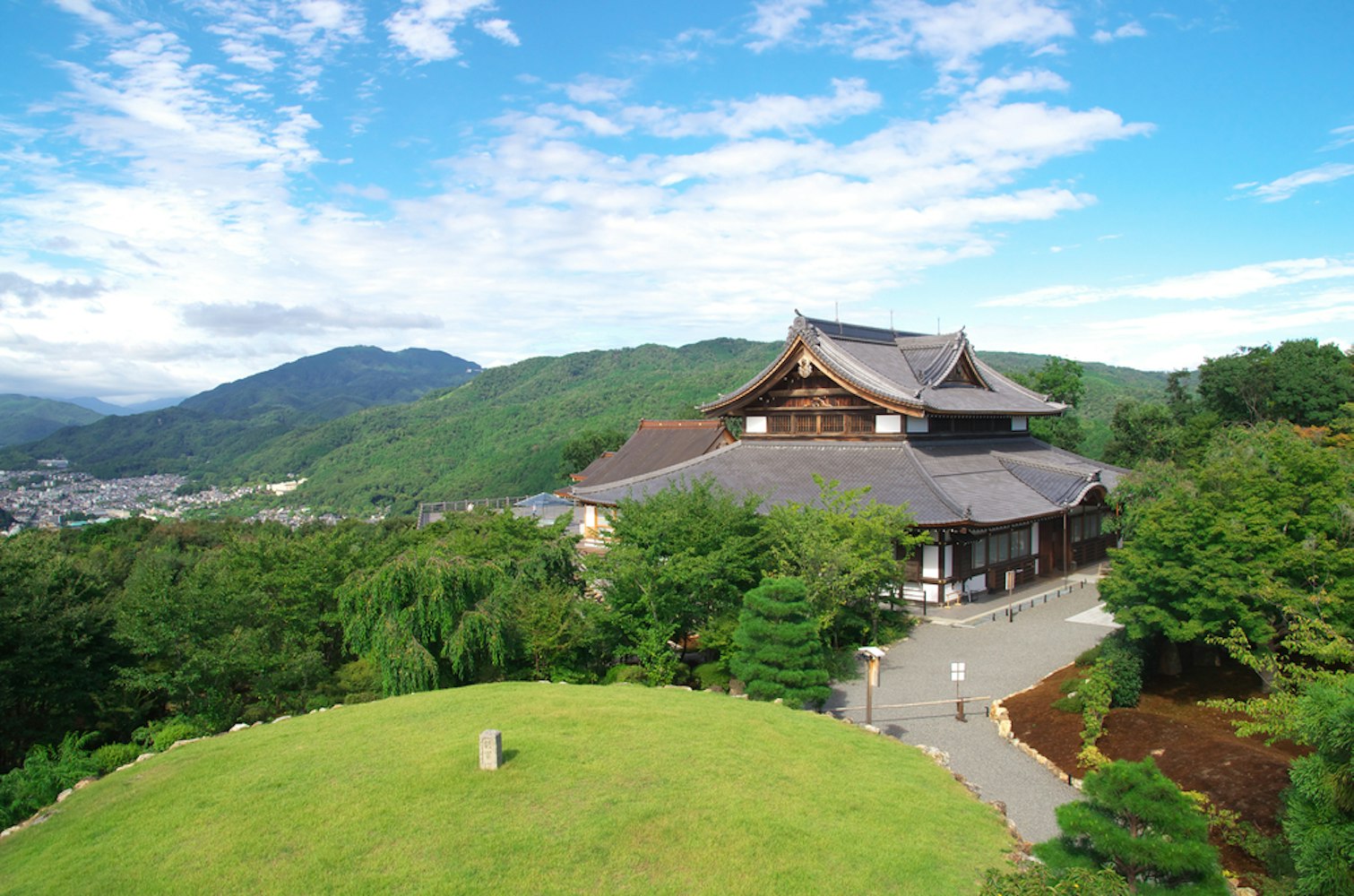
Located on Mount Higashiyama, Shogunzuka Mound is a place steeped in history. It's believed to be the very spot where Emperor Kammu decided to establish Kyoto as a new capital city in the 8th century.
As part of this significant history, Emperor Kammu buried a statue of a Shogun (a general) in the mound and prayed for lasting peace in the capital. Today, Shogunzuka Mound connects to the past and breathtaking hilltop views of Kyoto.
The observation decks provide a stunning vantage point, especially during sunset when the city is bathed in a warm, golden light. Additionally, in the vicinity, you'll find Shogunzuka Seiryu-den Temple, a place of further cultural significance, open daily from 9 a.m. to 5 p.m. It's a beautiful spot with a rich history and magnificent natural surroundings.
Gion District
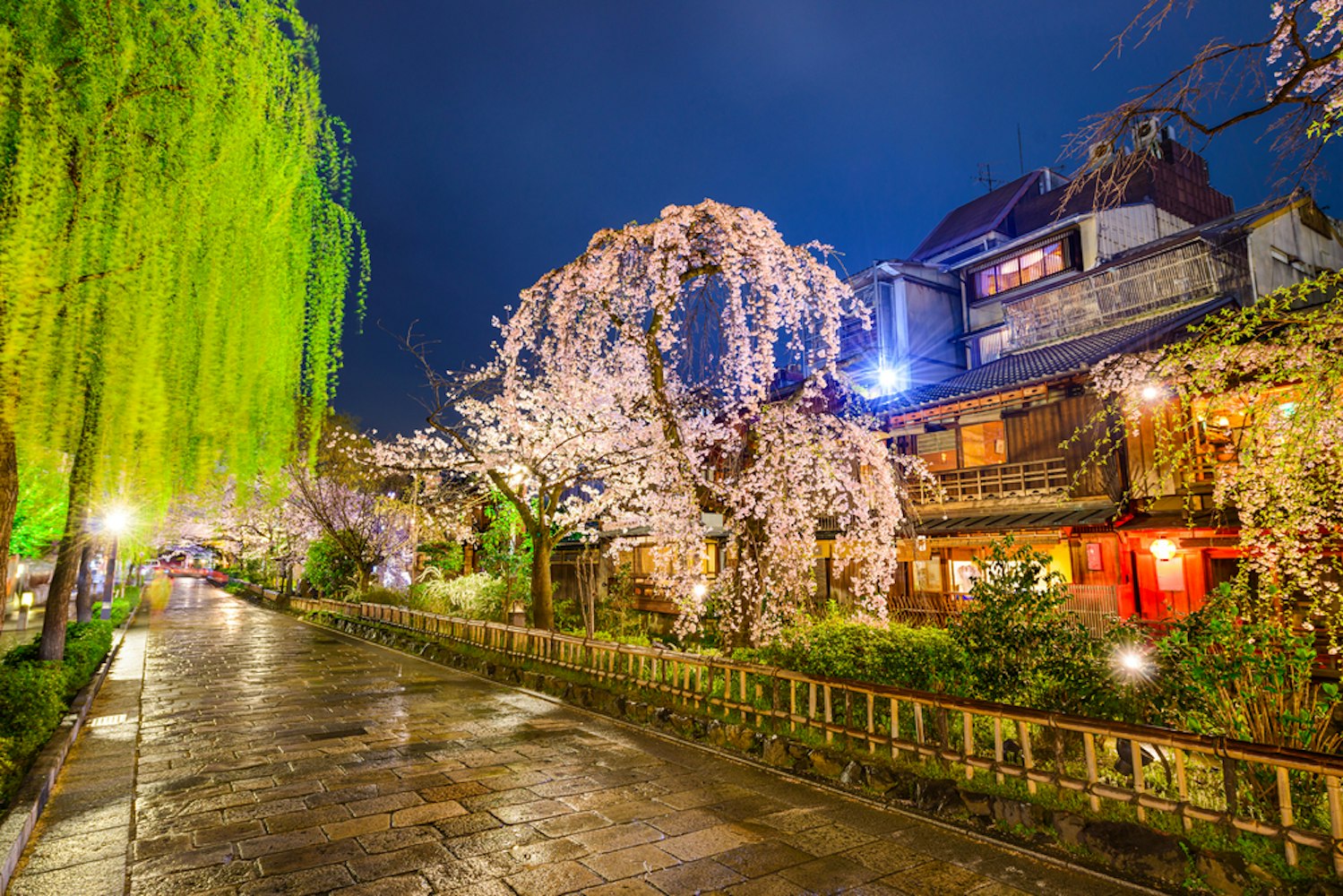
Gion, Kyoto's famous geisha district, is a historic area between the Yasaka Shrine and the serene Kamo River along Shijo Avenue. Originally established during the Sengoku period to cater to shrine visitors, Gion is now a bustling hub filled with shops, restaurants, and teahouses where geiko (geisha) and maiko (geiko apprentices) entertain.
Traditional Japanese culture shines here with geisha dances and Kabuki performances. Accessible by bus, taxi, or subway from Kyoto Station, Gion is a captivating destination where Kyoto's rich heritage comes to life.
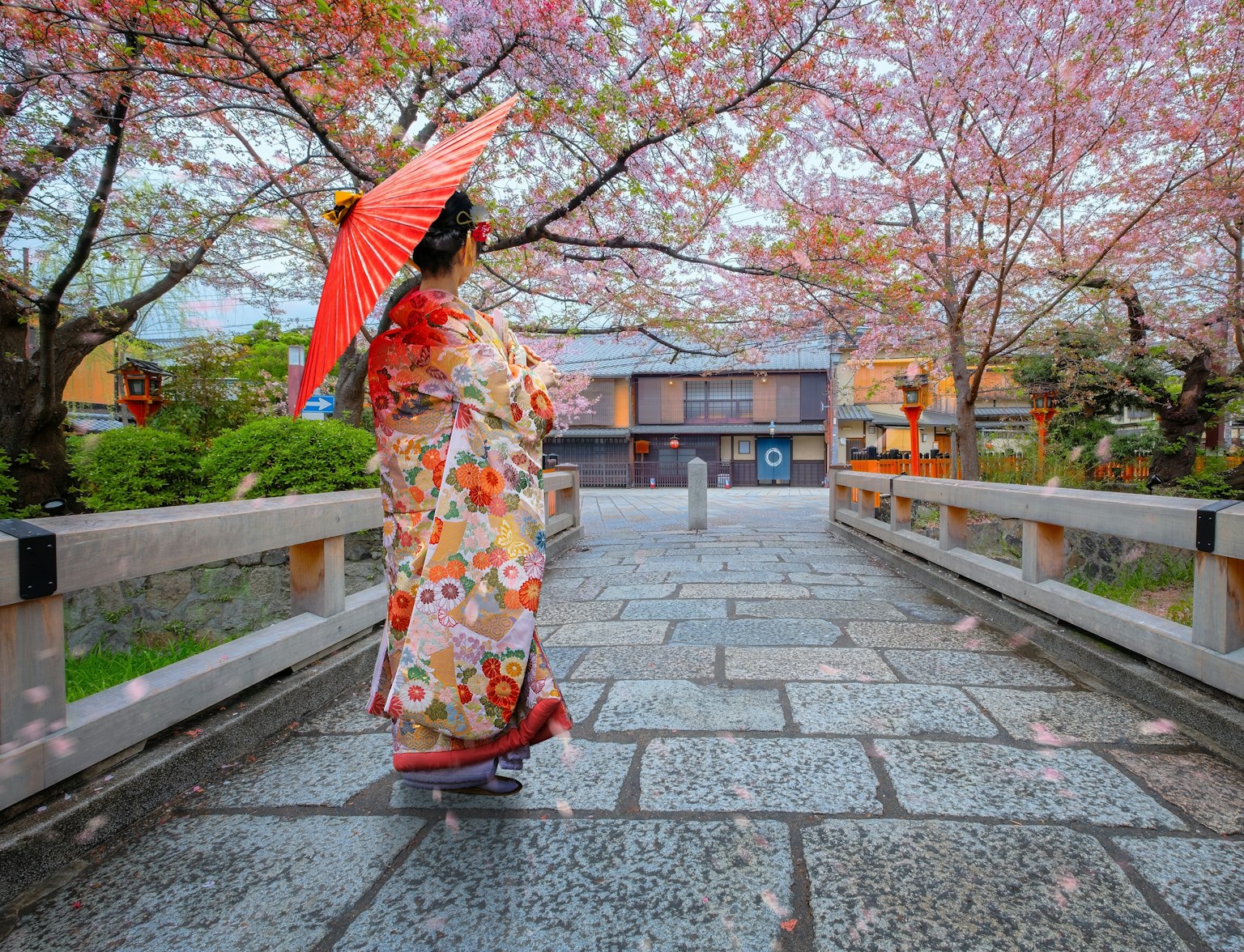
Experience the enchanting world of Gion, Kyoto's historic geisha district.
The Philosopher's Path
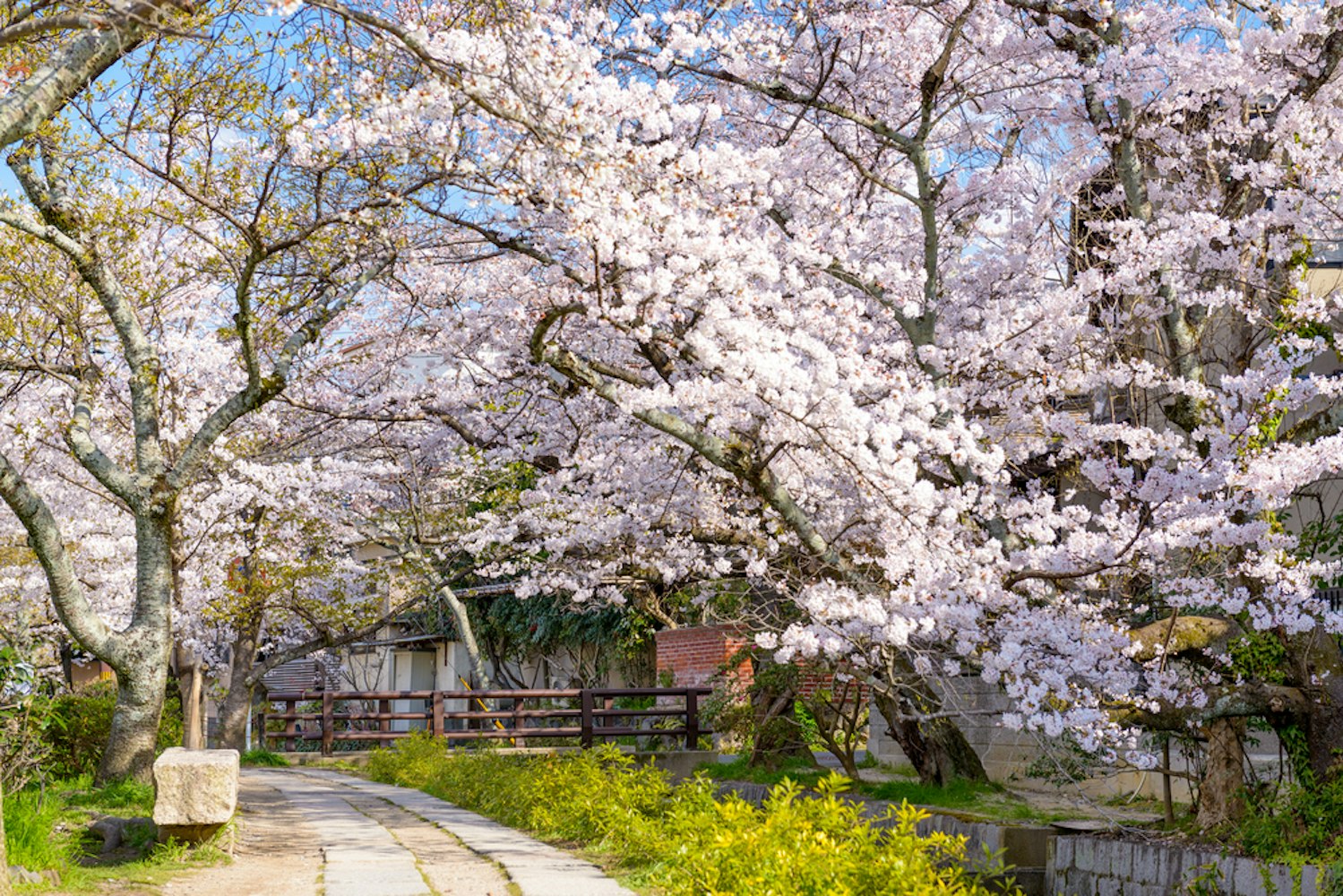
The Philosopher's Path, or Tetsugaku no Michi in Japanese, is a charming stone walkway in Kyoto, Japan, between the Ginkaku-ji and Nanzen-ji temples in the Higashiyama district. Named after the 20th-century Japanese philosopher Nishida Kitaro, who meditated along this route during his commute to Kyoto University, it's a serene spot.
The path runs alongside a shallow irrigation canal fed by the Lake Biwa Canal and is adorned with cherry trees and temples, making it a popular trail for tourists. It's an ideal place for a peaceful stroll, offering insights into Kyoto's cultural heritage.
The Philosopher's Path is beautifully illuminated at night, creating a magical atmosphere. It's worth visiting year-round, with each season showcasing its unique charm. While spring draws the most crowds due to cherry blossoms, every season has its own appeal.
The Silver Pavilion
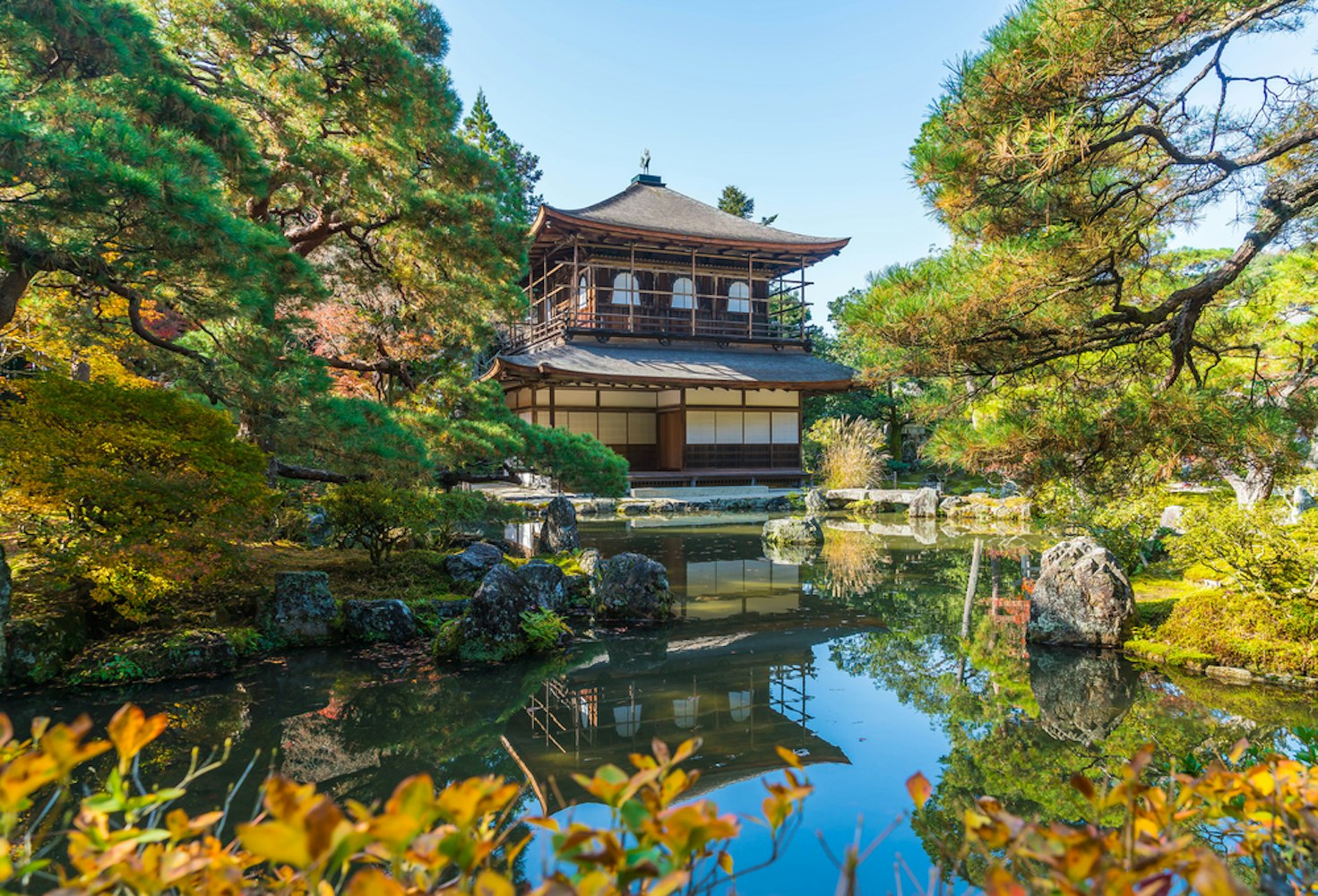
Located in eastern Kyoto, the Silver Pavilion, also known as Ginkakuji, is a graceful Zen temple distinguished by its impressive temple structures and lovely gardens. Originally built in 1482 as a retirement villa for Shogun Ashikaga Yoshimasa, it was designed to emulate the Golden Pavilion, which had been constructed for his grandfather.
The central two-story pavilion, officially named the Kannon Hall, is devoted to Kannon, the Buddhist goddess of mercy. You'll find several other temples and two exquisite gardens within the temple grounds, including the renowned 'Sea of Silver Sand' garden.
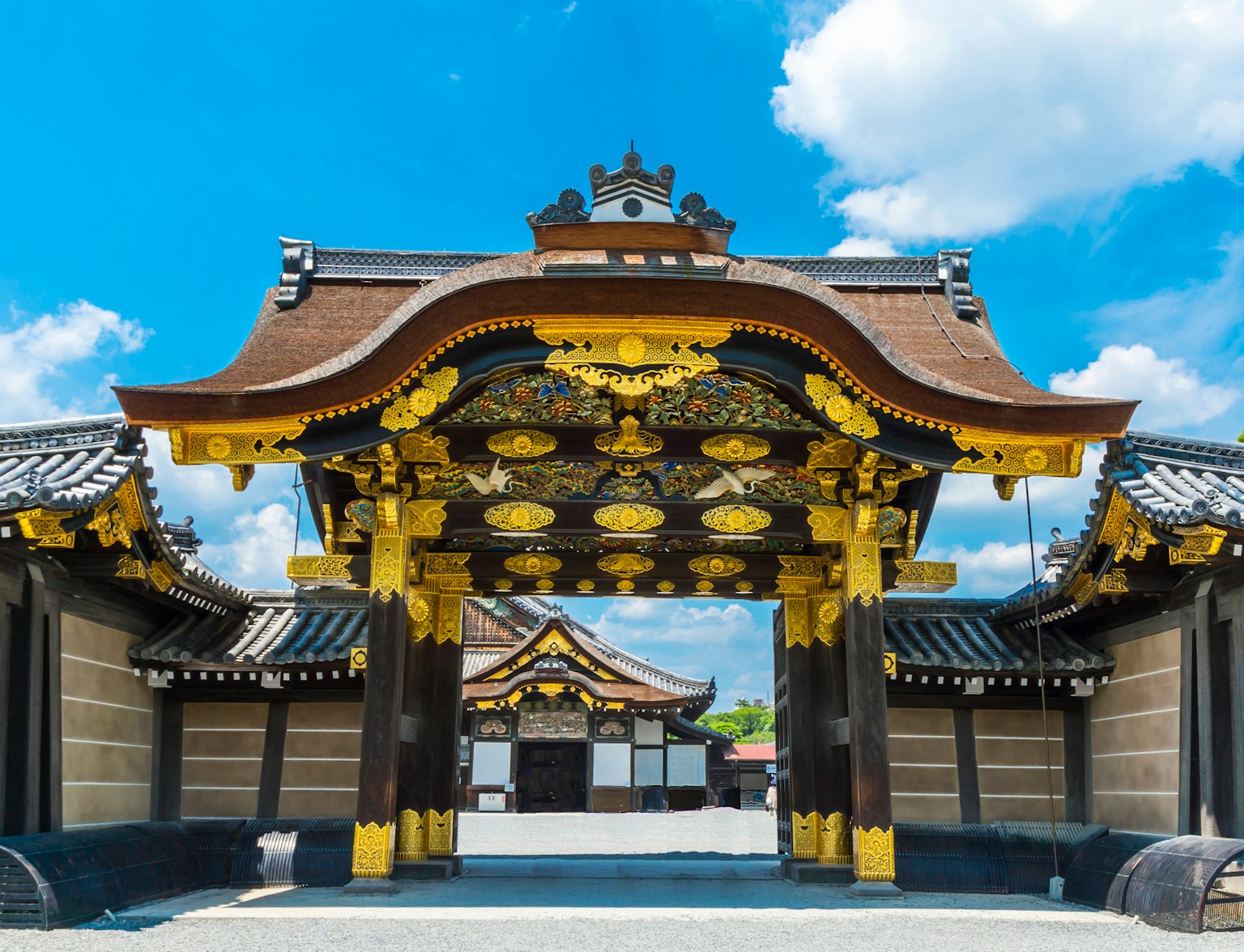
Visit Ginkakuji with this tour.
Kyoto National Museum
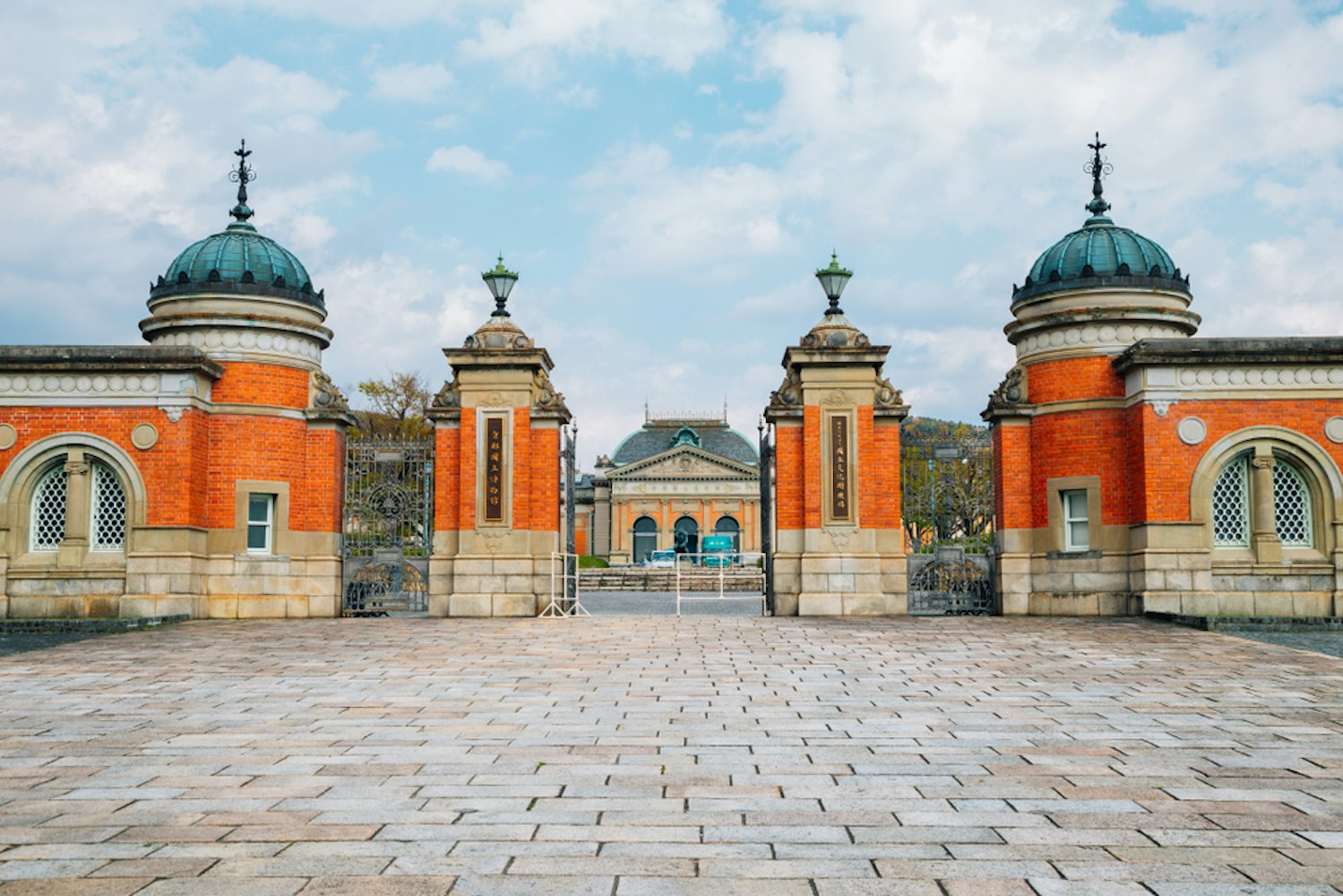
Founded in 1897, Kyoto National Museum, located in Higashiyama, is one of Japan's premier art institutions. As one of only four national museums, it significantly preserves Japan's artistic heritage.
Housed in a historic Meiji Period building, the museum boasts a remarkable permanent collection spanning various Japanese art periods. Visiting the Kyoto National Museum is a must for art enthusiasts exploring Higashiyama.
Its galleries provide a captivating journey through Japan's art history, featuring diverse masterpieces from different eras and genres. Additionally, the museum hosts engaging special exhibitions that offer fresh insights into Japan's cultural legacy.
Higashiyama Hanatoro
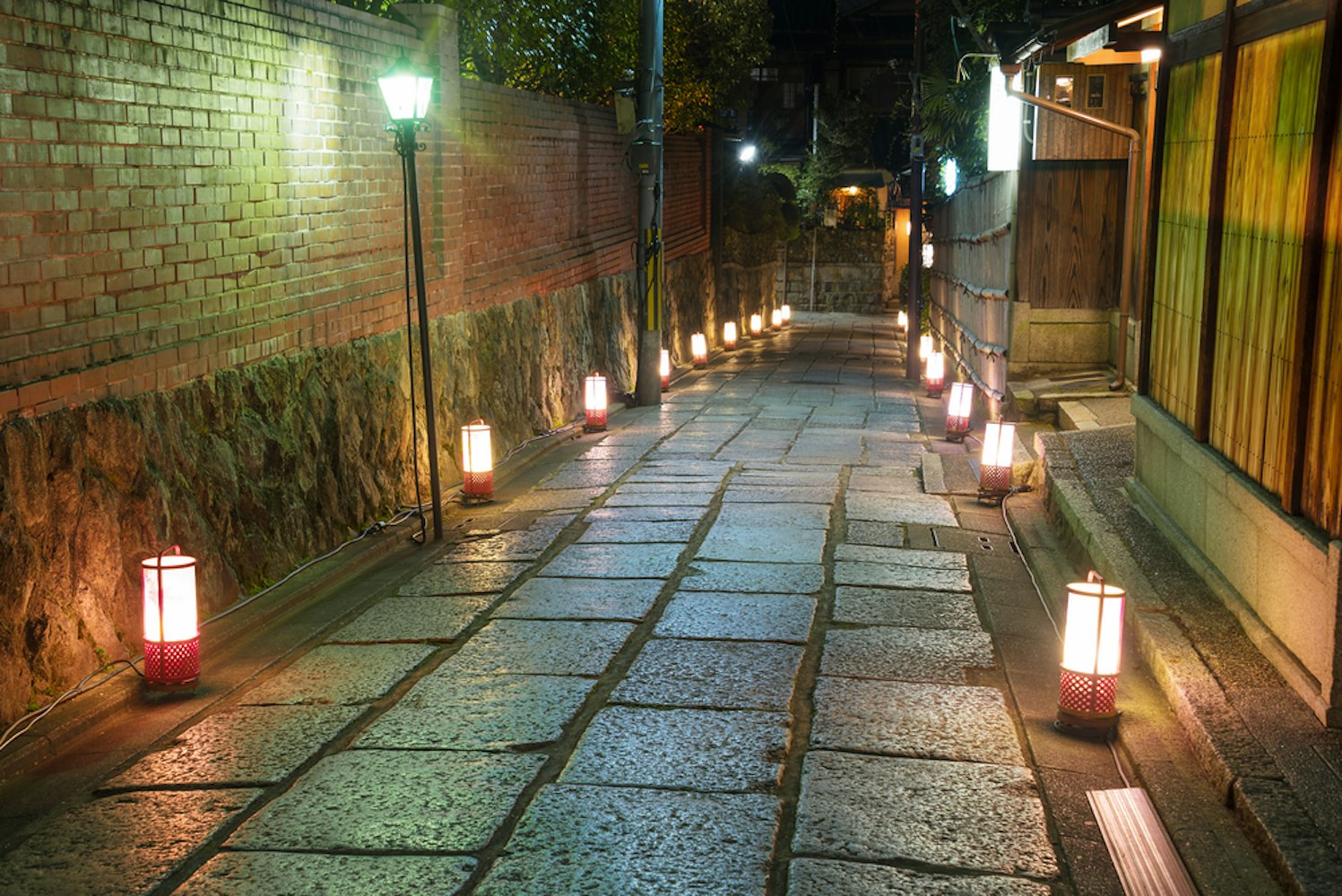
Higashiyama Hanatoro, held in Kyoto, Japan, during early to mid-March, is a captivating light-up event. "Hanatoro" translates to the "road of flower and light."
Thousands of lanterns gracefully light up the streets' public art installations and numerous temples and shrines, creating a mesmerizing ambiance. Beyond the illuminations, Hanatoro offers live and street performances, and some of the region's most renowned landmarks, including Kodai-ji Temple and Hokan-ji Temple, dazzle visitors with seasonal light displays.
Originally conceived to attract tourists during the off-season, Hanatoro has become a beloved annual tradition.
How to Get There
Accessing Higashiyama from central Kyoto is straightforward and convenient. The capital city bus and the Keihan Line are reliable transport options, with stops such as Gion Shijo Station and Kiyomizu Gojo serving as gateways to the district.
For those coming from Kyoto Station, the city's primary transportation hub, Higashiyama is merely a brief journey. This ease of accessibility makes Higashiyama an ideal destination for both local and international travelers.
Tips on Visiting in Higashiyama District
Start Early to Avoid Crowds
Wear Comfortable Shoes for Walking
Plan Your Route for Efficiency
Explore Charming Side Streets
Show Respect in Religious Sites
Enjoy Local Sweets and Tea
Allocate Time for Shopping
Capture Beautiful Views
Stay Hydrated and Rest When Needed
Consider Guided Tours for Insights
Higashiyama: The Essence of Kyoto's History and Culture
Exploring Higashiyama is an immersive experience that delves deep into Kyoto's essence, where temples, historic lanes, and artisanal stores abound. This district encapsulates the city centre rich heritage, from the majestic Golden Pavilion to the serene bamboo groves in the Kiyomizu area.
It offers a vivid window into the life and culture of ancient Kyoto. A visit here is not just a tour but a journey through the living history and soul of one of Japan's most storied cities.
FAQs
What is Higashiyama known for?
Higashiyama, encompassing numerous UNESCO World Heritage temples, epitomizes Kyoto's well-preserved old townscapes. This expansive area is also home to several of the city's renowned kagai, known for their geisha districts.
Is Higashiyama good at night?
Higashiyama transforms into one of Kyoto's most enchanting areas as night falls. The presence of Gion, the iconic Kiyomizu-Dera Temple, and the picturesque Yasaka Street heighten its mystical allure.
What is the famous street in Higashiyama?
Sannenzaka, located in the Higashiyama area of Kyoto district, is a prominent tourist destination. This historic path, known for its stone staircase and cobblestone streets, is the traditional approach to the Kiyomizu Temple.
How much does Higashiyama Jisho Ji cost?
The entry fee for Higashiyama Jisho-ji for adult visitors is 500 yen.
How long do you spend in Higashiyama Ward?
The journey between Kiyomizudera and Yasaka Shrine in the Higashiyama District is a brief two-kilometer stroll, typically taking around half an hour. However, the area is so rich in attractions, including various shops, cafes, temples, and shrines, that one could effortlessly spend half a day or even longer exploring its many facets.
This path offers a walk and a comprehensive experience of Kyoto's cultural and historical beauty. Each step in this district unveils something new, making it a journey worth savoring.



